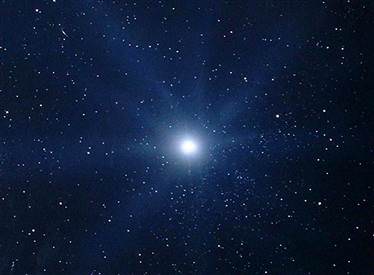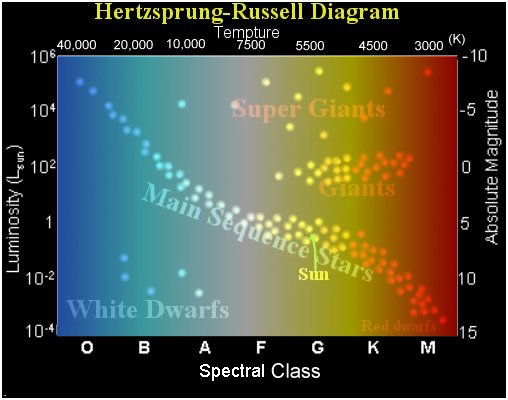Stars are large hot gases ball, some of them are bright but some are dim. They look small at night when you look at them, it i because they are light years far away from us, but actually most of them are really huge, and even bigger and brighter than the Sun. Stars have many different sizes and colors.
In the center of the stars is where the heat is made, it is made by the nuclear fusion. Stars can classified in different categories, such as types of stars, colors, sizes, ages, luminosity, temperatures and spectral class.

2. Types of Stars
Stars are classified into 4 different types. They are Super Giant, Giant, Main Sequence and White Dwarf. They are also classified in other 6 different categories, ages, size, temperature, luminosity, color and spectral class.
White dwarf stars are white old stars and very small, temperature is in between 4,000-7,000, they are dim stars, spectral class of white dwarf can be B, A, F. Main sequence stars are young medium stars that can be any colors, temperature and luminosity, therefore, they all have different spectral class. Giant stars are large middle age stars, it can be any color, temperature and luminosity, so spectral class can be different too. Super giant stars are super huge middle age stars, that can have any color, temperature luminosity and spectral class.





3. H-R Diagram
H-R Diagram's full name is Hertzprung-Russell Diagram.
A H-R Diagram is a graphical tool to show the characteristics of stars, and classified them based on their colors, star types, ages, sizes, luminosity, temperature and stars' names, based on all these information, you can also define their spectral class.

4. Nuclear Fusion
We know a star is born with a giant cloud, the cloud gets smaller sometimes because the gravity, when it shrink, it gets hotter and hotter, when it is hot enough, a new star is born. And this is nuclear reaction.
Nuclear fusion help stars to make energy. It is the process of the nuclear reaction change two hydrogen molecules into a helium molecule and energy inside the stars.

5. The Life Cycle of a Star
Stars have a life cycle, it tells the process and everything before they were born, during their life, and after they died. Every stars are born with giant clouds with dust and gas, this is called stellar nebula. But there is a different cycle between sun-like stars, huge stars and giant stars.
Sun-like stars born with stellar nebula which is a giant cloud with dust and gas, and then it forms a star, next step will become a red giant star, and the red giant star will collapse in to a cloud of dust and gas, this is planetary nebula, and it will become a white dwarf after it, and finally it die and become a black dwarf. Huge star born with stellar nebula too, after it forms a star, it become a red giant, the star will have a big explosion called supernova, and it become a neutron star. Giant star follow almost the exact steps as the huge stars, but unlike huge star, after the supernova, giant star will become a black hole.
